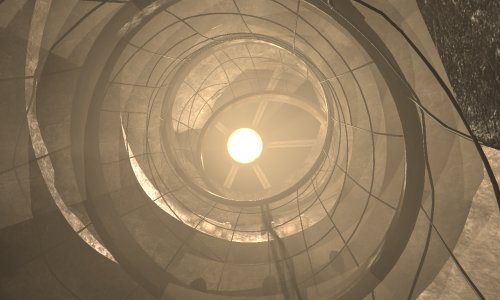I’ve been an enthusiastic proponent of paper prototyping, but I’m starting to see its limitations.
I’ve been playing The Void by Ice Pick Lodge. Ice Pick Lodge are the closest thing the game industry has to David Lynch. Aesthetically the game is remarkable, but I’m not going to address any of that.
In spite of an exhaustive tutorial, it’s actually even less accessible than their début game, Pathologic. It’s shorter and easier, but the gameplay is more difficult to grasp. I restarted the game four times after screwing the pooch so badly that the game became unwinnable. The game is just so abstract that it takes a while to understand the strategy.
The game establishes a jargon of it’s own from the beginning. Hearts, Colour, Nerva, Lympha are all abstract quantities or containers for abstract quantities. The colours crimson, amber, gold, emerald, azure, violet and silver all have special properties and uses. Before long, you start to feel like you’re playing Settlers of Catan.
If a game design is built wholly on paper, it’ll continue to reflect the limitations of board games even in its final form. The Void has all the hallmarks of being prototyped as a board game, then shoe-horned into a third person adventure game. This isn’t necessarily a bad thing, but it has drawbacks:
- Board games can get away with game mechanics that are less intuitive than videogames. The fact that the player is carrying out rules manually guarantees that the mechanics will be tactically transparent. A videogame will need lots and lots of cumbersome UI to compensate.
- When designing a board game, it’s really tempting to leave the theme until later. You’ll tell yourself that if the game mechanics are fun, everything else will fall into place. Usually this results in a game that’s fun, but completely impossible to fit into a theme. A game without a theme is a very dry learning experience. One of the biggest differences between Pathologic and The Void is that Pathologic started with familiar concepts (sickness, medicine, exhaustion, hunger), and then exposed the player to unfamiliar ones. The Void drops the unfamiliar concepts on the player all at once.
- If you’re designing a real-time game, there will be a distinct seam between the nitty gritty details of your simulated world and the strategy layer. It’s very difficult to integrate the two after designing the pieces in isolation.
- Board games tend to be a lot shorter than story driven videogames. To progress in The Void, you must plan at least 5 turns ahead. With the minutes-long turns of a board game, this forward planning gives a pleasant level of strategic depth. With the hour-long turns of this action-strategy hybrid, you’ll find yourself taking pages and pages of notes just to make sure you don’t spend something you were intending to save.
I don’t know how much the awkward game mechanics are a deliberate part of the game’s message. The resource management aspect seems intended to provide irreversibility, so that the player’s decisions have weight and poignancy. Making these weighty decisions without understanding the consequences is part of the game’s theme. For less ambitious folks like myself, who are only shooting for an enjoyable game, it remains a counter example.

